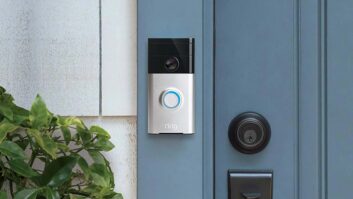Frank DeMartin is VP, Marketing at Mitsubishi Digital Electronics America.
We are in the worst recession since the Great Depression. The economic crisis has permanently changed the way we do business as brands and as retailers. We all know too painfully well the consequences for not adapting fast enough to this new reality. Major TV brands like Pioneer and major retailers like Circuit City were unable to react quickly enough to this changing reality.
More than ever, consumers are demanding value — not simply low prices but genuine value. Consumers have seen their net worth plummet over the last year. They are saving more and spending less. The good news is that consumers continue to spend. However, when they do, they require strong value, especially for large purchases like a television.
The flat-panel TV category has matured and growth has slowed. Unit sales growth is not keeping up with the rate of price erosion. Simply selling more flat panels is no longer a viable business strategy. In order to keep up in the commodity flat-panel category, retailers need to operate at the lowest cost possible. Sounds ominous, but you have a choice. Choose not to sell only commodity flat-panel TVs. Choose to differentiate.
How do you compete with low-cost discount retailers such as Wal-Mart? Certainly not on price. Leverage your assets to differentiate and offer added value. You have a trained sales force. You deliver. You provide hands-on service to your customers. Leveraging these assets with a different mix of product offerings will allow you to differentiate from the discount retailer and provide true value to your customers.
Large-screen DLP home-theater TV (HTTV) is one product category that enables you to be different. Discounters cannot sell this product. Only you can. And consumers still want the large-screen experience. When given the choice of a larger screen size at the same or slightly higher price, consumers overwhelmingly choose to go large. In addition, 90 percent of your customers are not wall-mounting their TV. Why not offer an option that fits their lifestyle? Large-screen HTTV is not only a value for your customer, it provides the opportunity for more margin for you through higher attachment of furniture, audio, Blu-ray and other accessory products.
Large-screen 60-inch-plus prices are higher and price erosion is lower than for small screens. From January 2008 through January 2009, the price of large-screen TVs declined by 7.3 percent, from $2,240, to $2,076. On the other hand, the price of small-screen TVs declined by 29.1 percent, from $1,080, to $766. Consumers are willing to pay more for larger screens and the large-TV category provides some shelter from the fast-declining commodity TV category.
The large-screen category is alive and well. And the category is getting a big addition this year — Mitsubishi is introducing the 82-inch DLP Home Theater TV. The 82-inch will increase sales of 73-inch and 65-inch sets and as a result will further expand the large-screen TV segment.
HTTV not only provides true value to consumers, but large screen also provide large energy savings. Our world has permanently changed — energy is a now high priority for consumers. It is about saving money, but it’s more about saving the planet. DLP HTTV consumes about one-half the power of similarly sized flat panels.
So let’s review: Your customers want a large-screen home-theater experience; they want value; they are not wall-mounting; and they want to save energy. You, as a value-added retailer, want to differentiate from the discount retailer; you want to offer your customers true value; and you want more margin through higher attachments. The answer: large-screen DLP home-theater TV for value and performance, energy efficiency, and its readiness for the future with 3-D-ready technology.













